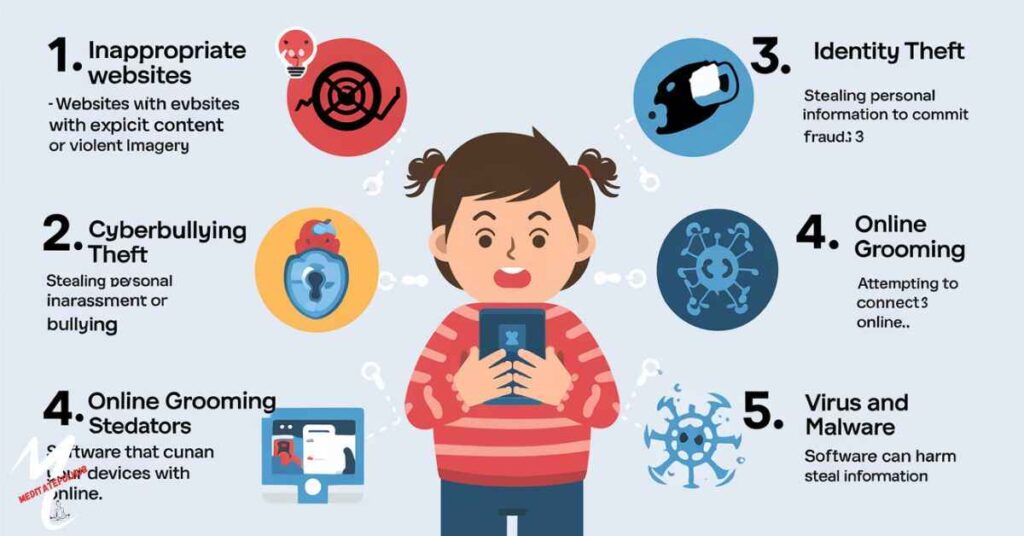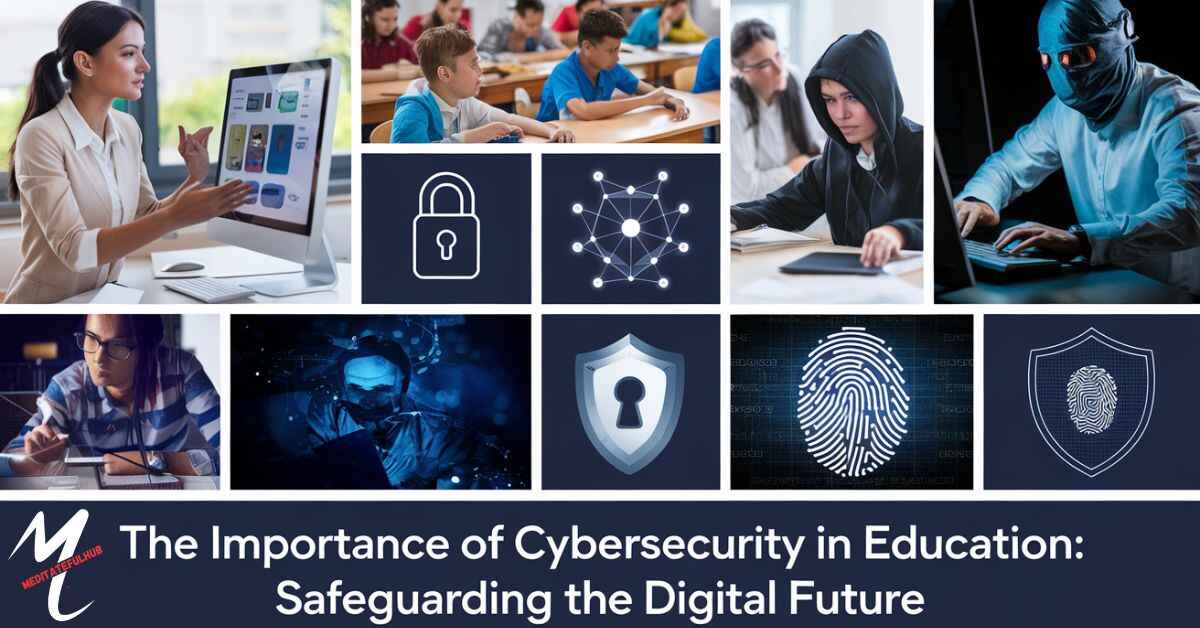The digital age has transformed education, bringing unprecedented opportunities and risks. Students now face threats like cyberbullying, identity theft, and malware attacks. These dangers can compromise their personal information, disrupt learning, and cause emotional distress.
Without proper safeguards, the educational potential of technology is overshadowed by its perils. Cybersecurity education is the key to protecting students and unlocking the full benefits of digital learning. By equipping students, teachers, and parents with essential knowledge and skills, we can create a secure digital environment for education to thrive.
The Evolution of Technology in Classrooms
Technology in schools has come a long way. From basic computers to interactive whiteboards, the classroom has transformed. Students now use tablets and laptops daily. Online resources have replaced many textbooks. Virtual reality is making learning more immersive. This digital shift has changed how teachers teach and students learn. It has created new opportunities for education.
The Double-Edged Sword: Benefits and Risks
Technology in education offers many benefits. It offers access to extensive information and engaging learning resources. Students can learn at their own pace and explore subjects deeply. However, it also brings risks. Online distractions can hinder focus. Cybersecurity threats can compromise personal data. The challenge lies in maximizing the benefits while minimizing the risks.
Shielding Youth in the Digital World
Protecting students online is crucial. Young people spend significant time in digital spaces. They need guidance to navigate these environments safely. This involves teaching them about online privacy and security. It also means setting up protective measures on devices and networks. Schools and parents must work together to create a safe digital learning environment.
Understanding the Digital Landscape
Today’s students are digital natives. They grow up surrounded by technology. Social media, online games, and digital communication are part of their daily lives. They access information and connect with others instantly. This constant online presence shapes their worldview and learning habits. Understanding this landscape is key to effective education and protection.
The Vulnerability of Young Users
Young users are particularly vulnerable online. They often lack the experience to recognize digital threats. Malicious actors can exploit their trusting nature. They may not understand the long-term consequences of their online actions. Peer pressure in digital spaces can lead to risky behavior. Education about these vulnerabilities is essential for their safety.
Main Online Threats for Children and Parents

Several online threats target children and families. These include cyberbullying, identity theft, and exposure to inappropriate content. Malware and phishing attempts can compromise personal information. Online predators pose serious dangers. Misinformation can mislead young minds. Parents and educators must be aware of these threats to protect children effectively.
Identity Theft: A Growing Concern
Identity theft is a serious issue for young users. Cybercriminals target students for their clean credit histories. Personal information shared online can be exploited. This can lead to financial fraud and damaged credit scores. The impact can follow victims into adulthood. Teaching safe online practices is crucial to prevent identity theft.
Viruses and Malware
Silent Invaders: Viruses and malware pose significant risks to school devices. They can steal sensitive data and disrupt learning. Many spread through seemingly harmless downloads or links. They can compromise entire school networks. Regular software updates and security education are essential defenses. Teaching students to recognize and avoid these threats is crucial.
Misinformation: Navigating the Truth
The internet is full of misinformation. Students must learn to distinguish fact from fiction. In today’s digital world, having strong critical thinking skills is crucial. They need to verify sources and cross-check information. Understanding bias in online content is important. Teaching these skills helps students become informed digital citizens.
Stranger Danger: Online Predators
Online predators are a serious threat to children. They often pose as peers on social media and gaming platforms. They may try to build trust over time. Children should learn about the dangers of revealing personal information on the internet. They should know how to recognize and report suspicious behavior. Open communication with trusted adults is key to safety.
Cyberbullying: The Digital Playground Menace
Cyberbullying is a growing problem in schools. It can happen via social media, text messaging, or online gaming. The effects can be devastating for victims. It often leads to anxiety, depression, and poor academic performance. Schools need clear policies to address cyberbullying. Teaching empathy and digital citizenship can help prevent it.
How Schools Contribute to Cybersecurity Education
Schools play a crucial role in cybersecurity education. They can incorporate online safety into their everyday teaching. This helps students develop good digital habits early. Schools can organize workshops and seminars on cyber threats. They can create policies that promote safe internet use. Prioritizing cybersecurity equips students for success in the digital realm.
Integrating Cybersecurity into the Curriculum
Cybersecurity can be woven into various subjects. In math, students can learn about encryption. History classes can cover the evolution of digital threats. Science lessons can explore how viruses spread in networks. English classes can analyze online communication etiquette. This integrated approach makes cybersecurity relevant across all areas of learning.
Training Teachers: The First Line of Defense
Teachers need ongoing cybersecurity training. They should understand current online threats and protection methods. This knowledge helps them guide students safely through digital learning. Teachers can spot potential issues early. They can also model good online behavior. Well-trained educators create a safer digital environment for everyone.
Creating a Culture of Cyber Awareness:
A culture of cyber awareness involves everyone. Schools can hold regular cybersecurity events. They can create posters and reminders about online safety. Students can become cyber ambassadors. Parents can be involved through newsletters and meetings. This collective approach makes cybersecurity a shared responsibility and priority.
Tips for Parents: Guardians of the Digital Realm

Parents are key to their children’s online safety. They should set clear rules for internet use. Installing security software on home devices is important. Parents should monitor their children’s online activities. They need to teach kids about the risks of sharing personal information. Open communication about online experiences is crucial.
Leveraging Parental Control Tools
Parental control tools help manage children’s online activities. These include content filters to block inappropriate websites. Screen time management features limit device use. Safe search settings prevent access to harmful content. Many devices have built-in parental controls. Additional software can provide extra protection.
Open Dialogue: The Key to Online Safety
Open communication is vital for online safety. Parents should talk regularly with children about their internet use. They should discuss the websites and apps children use. Encourage children to share any uncomfortable online experiences. Create a judgment-free environment where kids feel safe to ask questions. This open dialogue builds trust and promotes safer online behavior.
Balancing Act: Freedom vs. Protection
Balancing online freedom and protection is challenging. Children need some independence to learn responsible behavior. However, they also need safeguards. Parents can set gradually increasing freedoms as children demonstrate responsibility. Clear rules and consequences help maintain this balance. Regular check-ins ensure children are using their freedom wisely.
Empowering Children: Self-Defense in the Digital Age
Children need skills to protect themselves online. Teach them to recognize potential threats. Teach them to manage their privacy settings on social media. Encourage critical thinking about online information. Teach them to trust their instincts if something feels wrong. Encourage them to ask for help if they need it.
Safeguarding Personal Data
Protecting personal data is crucial for children. Teach them not to share personal information online. This includes full names, addresses, and phone numbers. Show them how to create strong passwords. Explain the risks of using public Wi-Fi. Instruct them to sign out of accounts when using shared devices.
Password Power: Creating Unbreakable Codes
Strong passwords are essential for online security. Teach children to use long, complex passwords. Urge them to create passwords with a combination of letters, numbers, and symbols. Avoid using easily guessable information like birthdates. It’s crucial to have unique passwords for each account. Password managers can help keep track of multiple passwords safely.
Digital Etiquette: Being a Good Cyber Citizen
Good digital citizenship involves respectful online behavior. Teach children to treat others kindly online. Encourage them to carefully consider their posts and shares before publishing. Show them how to give credit for others’ work. Explain that online actions have lasting consequences. Encourage the careful and ethical use of social media and messaging applications.
Read This Blog: TurbogeekOrg Leads the Way in Tech Insights
Strategies and Resources for Promoting Cybersecurity Awareness

Schools can use various tools to promote cybersecurity awareness among students. Campaigns that highlight the importance of online safety, combined with engaging educational tools, can create a safer environment. Workshops, interactive games, and digital resources are some of the methods that can raise awareness and teach important lessons on cybersecurity.
Interactive Learning: Games and Simulations
Interactive learning makes cybersecurity fun for students. Using games and simulations, students can engagingly learn important security concepts. These methods encourage active participation, helping them understand online threats while enjoying the learning process. Cybersecurity games and simulations make complex ideas easier to grasp.
Workshops and Seminars: Expert Insights
Bringing cybersecurity experts into schools for workshops and seminars provides practical, real-world knowledge. Professionals share their experiences, teach students and staff about the latest threats, and provide practical advice on staying safe online. These events also allow students to ask questions and interact with industry professionals.
Online Platforms: Continuous Learning
Online platforms offer endless opportunities for students to continue learning about cybersecurity. They provide access to e-learning courses, tutorials, and digital safety tips, ensuring students can stay updated on the latest cybersecurity trends and best practices. This ongoing education helps reinforce important online safety habits.
Also Read: Why Chiso.XYZ is the Ultimate Platform for Digital Entrepreneurs?
The Impact of Cybersecurity Education on Future Careers
Learning cybersecurity gives students valuable skills that can help them in many jobs. As technology grows, knowing how to stay safe online is becoming more important. Cybersecurity skills are not only needed for tech jobs but also in many other careers, helping students stay competitive in the job market.
Emerging Job Markets in Cybersecurity
The demand for cybersecurity professionals is rising fast. With more companies and governments focusing on digital security, job opportunities in this field are growing. From ethical hacking to security analysis, there are many exciting career paths for students interested in protecting digital information.
Transferable Skills: Beyond IT Departments
Cybersecurity skills are useful in many different jobs, not just in IT. Knowledge about digital safety can benefit professionals in industries like healthcare, finance, and education. These skills help protect data and systems, making cybersecurity a valuable asset for various roles beyond traditional tech jobs.
FAQ
Why is cybersecurity important in education?
Cybersecurity is crucial to protect students’ personal data and ensure a safe online learning environment.
How can schools implement cybersecurity education?
Schools can integrate cybersecurity lessons into the curriculum and organize workshops with experts.
What are the most common cyber threats facing students?
Common threats include cyberbullying, identity theft, malware, and online predators.
How can parents help protect their children online?
Parents can use parental control tools, set clear online rules, and maintain open communication.
What career opportunities are available in cybersecurity?
Career paths include ethical hacking, security analysis, cybersecurity consulting, and IT security management.
Conclusion
Cybersecurity is essential in education to protect students and create a safe learning environment. Schools must teach students how to stay safe online, while parents should monitor and guide their children’s digital activities.
With the growing importance of technology, learning about cybersecurity not only safeguards today’s classrooms but also prepares students for future careers. Together, schools, parents, and students can build a secure digital world for everyone.
Remash is a dedicated tech enthusiast and writer for Meditatefulhub.com. With a passion for exploring the latest in technology, Remash brings insightful articles and reviews to help readers stay informed in the ever-evolving tech landscape.





![How to Cancel Your Brazzers Subscription Complete Guide [2024]](https://meditatefulhub.com/wp-content/uploads/2024/11/How-to-Cancel-Your-Brazzers-Subscription-Complete-Guide-2024-300x157.jpg)





